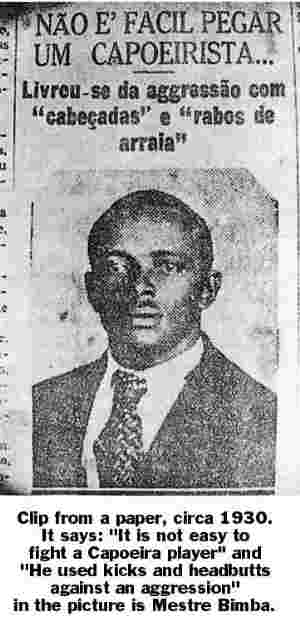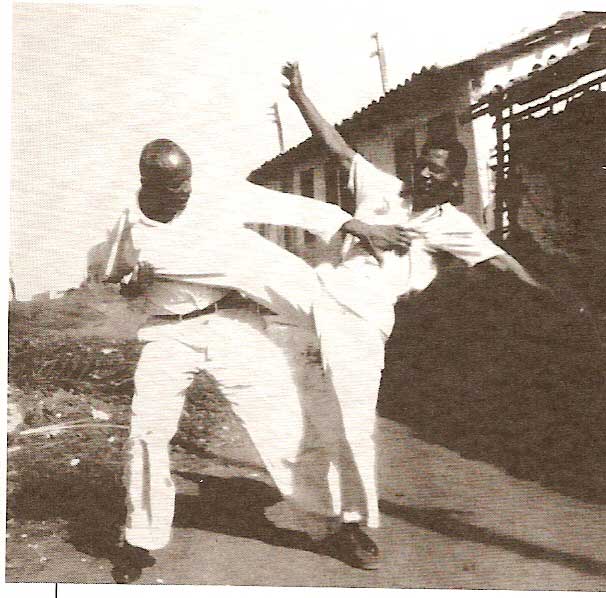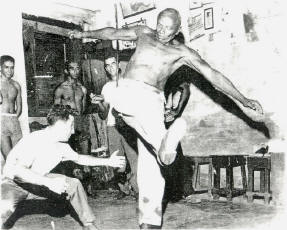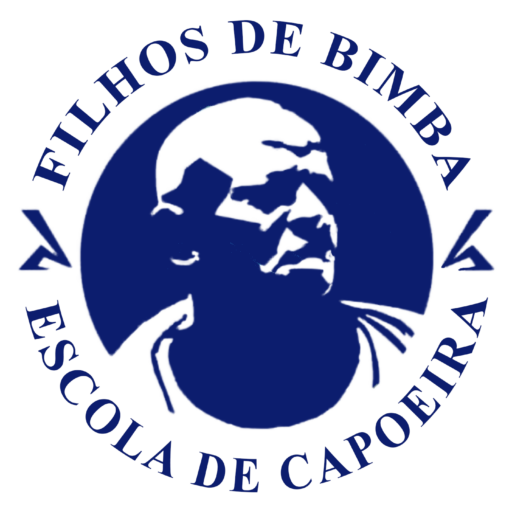
Capoeira was used by violent gangs in Rio which lead to its practice being prohibited by law. While in Bahia, capoeira became a much less aggressive pastime in the form of a folk dance with music, singing and ritual. In Bahia, capoeira the folk art became somewhat acceptable and was allowed only at traditional Sunday religious festivals.
Over time, the quality and the value of capoeira began to dwindle in the face of persecution and discrimination.
Mestre Bimba felt that the old capoeira had become too folkloric, having lost its efficiency, initial characteristics and having been reduced to only nine strikes.
To prevent capoeira’s extinction, Mestre Bimba set out on a mission by making it more effective and valuable to Brazilian society. In his genius, he rescued old movements, created others and adapted movements from batuque. Batuque was a soon to be extinct Afro-Brazilian dance-fight where the goal was to knock down your opponent to music. He learned batuque from one of its champions who also happened to be his father. Because the practice of a Capoeira was outlawed and viewed as a pastime of lazy street hustles, In the true nature of malicia (trickiness) he called his capoeira: Luta Regional Baiana (the regional fight from Bahia) because he could not legally call it Capoeira.

Mestre Bimba was successful in opening the FIRST CAPOEIRA ACADEMY in 1932 (later officially registered in 1937). He introduced a systematic teaching method to help facilitate learning that was especially effective with Brazilians who were not of African descent. His students had to show proof of work or be enrolled in school in order to improve the image and moral standards of the capoeirista. To prove the fighting effectiveness of his capoeira, he openly challenge and defeated combatants of capoeira and other martial art styles. Thanks to Mestre Bimba, capoeira took off in Bahia and eventually expanded to the rest of Brazil, where it had been erased through persecution. The primitive form of capoeira also benefited from Bimba’s work, as it forced its old adepts to come together and to attempt to define organize and modify their art from. The term “Capoeira Angola” began to be used, replacing the more common terms “Vadiacao,” “Brincadeira de Angola,” or simply “Capoeira.” The reputation of Mestre Bimba and his enlightened Capoeira grew to an apex when he and his students were invited to perform for the president of Brazil July 23, 1953. The president stated, “Capoeira was the only true national sport of Brazil”.

Mestre Bimba’s overall strategy was immensely successful. Without him, capoeira would have remained persecuted by law, limited to folkloric shows for tourist approval, or be just a memory in the wake of arriving Asian martial arts. Bimba knew that Capoeira was not just a form of self-defense but also a means of self-control and education. Due to his courage and sacrifice capoeira is now practiced in over 80 countries with more than 120 million practitioners around the world. Salve Capoeira!!!

Mestre Bimba and the former president of Brazil, Getúlio Dorneles Vargas. Vargas said, “Capoeira is the only sport which is truly Brazilian.”

